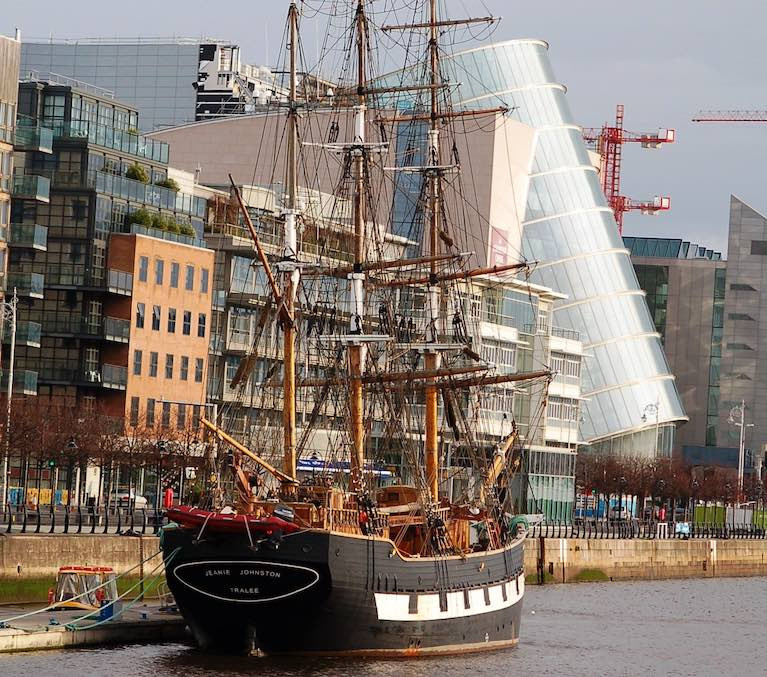Displaying items by tag: Killary Boat Tours
Boats are Excluded From State COVID Support Because They are Mobile
It seems logical, boats move, but that is their business. The Department of Finance takes a different view.
It has told boat operators that this mobility excludes them from being given the supports offered to businesses which are landbound – operating from fixed structures - bricks, mortar and buildings – under the Government's Covid 19 pandemic provisions.
That is the core of the disagreement between the Department and the Killary Fjord Boat Tours Company which operates vessels on Ireland's only fjord and on the River Liffey and Grand Canal in Dublin, as well as one that is fixed in position – the Jeanie Johnston moored at Custom House Quay.
 The Spirit of Docklands (50 tonnes, 48 passengers) was custom-designed for the River Liffey in Dublin
The Spirit of Docklands (50 tonnes, 48 passengers) was custom-designed for the River Liffey in Dublin
The Connemara Lady, (150 tonnes, passenger capacity 150), is a tourist operation at Killary Harbour in Connemara on the borders of Galway and Mayo. The Spirit of Docklands (50 tonnes, 48 passengers) was custom-designed for the Liffey, operating between Bachelors Walk and the East Link Bridge. Cadhla (50 tonnes, 65 passengers) was custom-designed for the Grand Canal, operating dining cruises between Mespil Road and the Grand Canal Dock. The tall ship, Jeanie Johnston, recalls Ireland's emigration history and sailed to the USA and Canada before becoming a museum ship at Dublin Port.
 The Connemara Lady, (150 tonnes, passenger capacity 150), is a tourist operation at Killary Harbour in Connemara
The Connemara Lady, (150 tonnes, passenger capacity 150), is a tourist operation at Killary Harbour in Connemara
"Our boat-based businesses are in a plight due to their exclusion from the Covid Restrictions Support Scheme. Indeed, the same applies to all marine tourism infrastructure throughout the country," the company says. "We have been excluded on the basis that our business has been construed as 'mobile' by the Dept. of Finance and as such deemed ineligible for this and other schemes.
"Our boat-based businesses are in a plight due to their exclusion from the Covid Restrictions Support Scheme"
This is despite the fact that, while our business moves as they provide their service we are bound by law and regulations and licensing to operate within a single area at all times."
 Cadhla (50 tonnes, 65 passengers) was custom-designed for the Grand Canal, operating dining cruises between Mespil Road and the Grand Canal Dock
Cadhla (50 tonnes, 65 passengers) was custom-designed for the Grand Canal, operating dining cruises between Mespil Road and the Grand Canal Dock
So, therein is the problem of perception – or understanding.
Micheál O Cionna, the Founder and Managing Director of the company, is my guest on this week's Podcast.
I've asked the Department of Finance to explain their perception and understanding of boats.
Listen to the Podcast below





























































